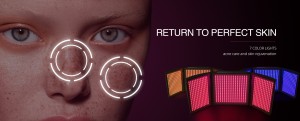Acne, commonly known as "pimples", is a common chronic inflammatory skin disease of the face, mostly in adolescents, and commonly found on the face, chest and back. The main pathogenic factors are closely related to the excessive secretion of sebaceous glands, the obstruction of hair follicle ducts, the proliferation of Propionibacterium acnes, and the increased expression of inflammatory factors.
The incidence of acne in the population cross-section was 8.1%. More than 95% of people will have acne to varying degrees, and 3% to 7% of acne patients will leave scars, which not only cause varying degrees of damage to individual faces (post-inflammatory hyperpigmentation, acne scars, acne scars), but also seriously affect youth People's mental health and social interaction.
Are you a moderate to severe acne sufferer?
According to the nature and severity of acne lesions, acne can be divided into three grades and four grades:
Grade I (mild): only comedones;
Grade II (moderate): In addition to acne, there are a few inflammatory papules and pustules;
Grade III (moderate): In addition to acne, there are many inflammatory papules and pustules;
Grade IV (severe): In addition to acne, inflammatory papules and pustules, there are nodules, cysts, and even scars.
In this era of looking at the face, acne prefers to "appear on the face", which makes people self-destructive, or spreads all over the chest and back. All kinds of remedies and special medicines are included in the bag, and a lot of money has been spent, but the acne still does not improve, and it keeps coming back and forth.
Or just leave it alone, let it go and let it develop, the beauty and self-confidence of youth are compromised, and finally say goodbye to youth, but leave a face with acne marks.
Clinically, conventional drugs for acne treatment include isotretinoin, antibiotics, etc., some of which have concerns about adverse reactions such as drug resistance and liver damage. "Photodynamic therapy" has become the first choice for many patients with moderate to severe acne!
What is "photodynamic" therapy?
"Photodynamic" therapy is a new technology for disease diagnosis and treatment based on the interaction of light, photosensitizers and oxygen, using photodynamic response, the full name is "aminolevulinic acid photodynamic therapy (ALA-PDT)" . The basis of its action is the photodynamic effect, the application of photosensitizers to enhance the activity of skin phototherapy.
In recent years, photodynamic therapy has been increasingly used in the treatment of acne, especially moderate to severe acne.
Photodynamic therapy can rapidly improve skin condition and restore skin to a healthy level. Acne photodynamic therapy uses a variety of light sources, including blue light, red light, or intense pulsed light. Photosensitizers, oxygen and light interact to kill bacteria and acne cells. In addition, photodynamic therapy can also reduce the size and activity of sebaceous glands, whose hyperactivity and inflammation are also factors in the pathogenesis of acne.
The treatment interval of photodynamic therapy for acne can be determined according to the response after treatment, which is generally 1-2 weeks, and should not exceed 4 weeks; the skin lesions are not significantly improved after treatment, and the treatment can be repeated, generally not more than 4 times.
Post time: Sep-14-2022






